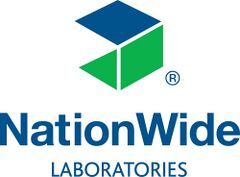Difference between revisions of "LabFacts Microbiology"
Fiorecastro (talk | contribs) (Created page with "right|link=https://www.nwlabs.co.uk/|alt=NationWide Logo|240x240px|frameless == Introduction == Use of the correct sampling technique and method...") |
|||
| Line 51: | Line 51: | ||
== Authors & References == | == Authors & References == | ||
[[NationWide Laboratories]] | [[NationWide Laboratories]] | ||
| + | [[Category:LabFacts Book NWL]] | ||
Revision as of 16:13, 28 April 2022
Introduction
Use of the correct sampling technique and method of sample submission will optimise the recovery of pathogenic organisms. Samples should be collected prior to treatment. Swabs for bacterial culture should be submitted in transport medium to prevent desiccation. Other samples should be submitted in sterile universal containers. If submission is delayed, samples should be refrigerated (NOT frozen). Samples should be clearly marked and accompanied by a submission form including patient details, the site from which the sample was taken and any relevant history.
Sampling techniques
The following information is not exhaustive. Please contact the laboratory for specific advice on any aspect of collection or submission of samples.
Abscess material
Collect approximately 3ml of pus along with scrapings from the abscess wall if practicable and submit in a sterile universal container. The number of actively dividing bacteria is low in chronic lesions, reducing the chance of isolating them in vitro.
Anaerobic cultures
Abscesses, deep wounds, thoracic or abdominal effusions, direct lung aspirates, tissue and blood are examples of materials which may require anaerobic culture. Preferred samples include swabs in charcoal transport medium, whole tissue or fluids. Air should be excluded as far as possible.
Blood cultures
Use routine aseptic technique to prepare the skin over the venipuncture site. Withdraw between 5-10ml of blood depending on the size of the patient. Immediately change the hypodermic needle, remove the outer foil cap from the blood culture bottle or bottles (available on request) and transfer 5ml of blood to each bottle. Do not remove the screw cap from the bottle.
Dermatophytes
Hairs, plucked or scraped from the periphery of a lesion or coat brushings collected with a toothbrush can be submitted in a sealed, labelled paper envelope. If a scalpel blade is included, the sample must be submitted in a sterile universal bottle, labelled and clearly marked. Clip or scrape claws as close to the base as possible. Please do not send slides treated with potassium hydroxide.
Ear swabs
Swabs should be taken from the horizontal canal if possible. If cytology is required, roll the swab along one or two sterile glass slides before immersing into transport medium. Label both the swab and the slides before submission.
Genital swabs
For vaginal swabs, to minimise perineal contamination, insert the swab through a speculum. Swabs in transport medium, unfixed tissue or fluids in a sterile universal bottle can be cultured for bacteria or yeasts, however, fungal culture is only performed on request.
Skin lesions
Intact pustules can be aseptically incised for culture of their contents. Superficial pyoderma must be sampled without prior preparation, preferably from the edge of a lesion. Biopsies for culture should be submitted in a sterile universal bottle wrapped in a sterile saline soaked swab to prevent tissue desiccation.
Synovial fluid
This should be obtained aseptically and submitted in joint culture medium. 0.5ml of joint fluid should be added to 5ml of the fast anaerobe broth. See instructions for blood culture.
Tissue from biopsies
Submit the biopsy in a sterile container wrapped in a swab soaked insterile saline to prevent desiccation. A second biopsy sample fixed in 10% formalin should be submitted concurrently for histology.
Tissues and organs post mortem
Samples for bacteriology should be collected as soon as possible after death. Use a heated scalpel blade to sear the surface of the organ and stab insert a sterile bacterial swab. Rotate the swab within the incision then place it in transport medium for submission to the laboratory.
Urine
Samples for culture should ideally be obtained by cystocentesis. Catheterised samples and mid stream, voided urine are acceptable but repeat culture may be required to determine the significance of any organisms isolated. A plain sample is required for routine urinalysis, a preserved sample in boric acid (filled to the line) is required for culture. Boric acid samples are suitable for preservation for up to 72 hours. Please state the method of collection when submitting a urine sample.
Sampling materials
The following materials are available on request.
- Sterile bacterial swabs in charcoal transport medium
- Blood culture bottles
- Joint culture bottles
Please visit www.nwlabs.co.uk or see our current price list for more information
